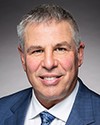Thank you very much for the opportunity to be here today.
I am a veteran farmer from here in Norfolk County, Ontario. I also serve as an executive in residence at the Ivey business school. Most importantly, today I come here as the CEO of ALUS.
To contextualize my position in ALUS, I was the third participant farmer in this program back in 2006. I've grown up with this program, through my community, to the point that I now run it.
ALUS stands for Alternative Land Use Services. The ALUS concept was born in 2008 in Manitoba farm country as the farmers' conservation plan. The acronym simply means a farmer shall use his land in an alternate way and produce a service—an ecosystem service—that we believe has market value.
ALUS has since grown into six provinces and more than 30 communities. ALUS is a Canadian charity that works with rural partners like counties, conservation authorities, watershed districts and other NGOs to help farmers and ranchers across Canada restore and enhance nature on their farmland, or in fact modify how the land is farmed.
It's important to realize that the biggest distinction of ALUS is a single one: In every community where we operate, we establish a partnership advisory committee made up of 50% farmers and other community leaders to adjudicate the program within their local area. This has become the secret sauce to delivering a robust environmental program that's growing rapidly across the country.
There is no doubt that Canada's farmers are on the front lines of climate change. Changing seasons and severe weather are all affecting the production of food and farmers' livelihoods. ALUS farmers and ranchers are fighting back against climate change. They are providing nature-based climate solutions that benefit all Canadians. Our wetland, grassland, sustainable grazing and tree projects all lower greenhouse gas emissions and sequester carbon, along with a host of other benefits, like creating new wildlife habitat—including for species at risk and pollinators—retaining and slowing stormwater to protect local and downstream communities, and improving air and water quality.
Our organization is lucky to work with many researchers across Canada who are helping us better understand the impacts from our farmers' projects. What our farmers see and what our researchers are now documenting is how quickly they get results. When projects are properly planned and managed, the benefits accrue quickly. After one year, our restoration projects can have the diversity and abundance of pollinators and species that eat crop pests equal to an undisturbed area. Better yet, we know from our research partners that converting land that isn't economic for farming back to nature helps farmers produce more food, even with less land, due to the extra pollination and crop protection that nature provides.
Researchers are also helping us identify the most promising areas for climate and water outcomes, which ensures that dollars go as far as possible. All evidence is pointing in one direction, which is that investing in nature through farmers is a smart strategy given the returns our communities receive. Turning the tide on climate change requires all hands on deck, or in this case, farmers who can put their hands in the dirt to make a difference.
Since 2015, our program has grown to now include 31 community partnerships in six provinces, including the participation to date of over 1,100 farmers and impacting over 125 square kilometres of land. As an organization, we have grown to deliver financial support to farmers, first from our humble beginnings under the umbrella of Delta Waterfowl foundation and then when we became independent as a Weston Family initiative. Now we are funded by over 30 partners. Of note, ALUS has taken great care to find market value for farmers' work, as evidenced by support from corporations such as Cargill, A&W, Danone, RBC and TD.
Obviously, over the years we have learned many lessons that I'd like to share with you today as the committee contemplates what the Government of Canada could implement in collaboration with producers to recognize the important role agriculture plays in this area.
First is that to be effective, programming must create value at the farm gate and not be seen as a temporary incentive program. These are not subsidies or incentives. We want to reward farmers for producing the ecosystem services that can solve the world's most pressing problems.
Second is to acknowledge that the creativity, skills and experience of the people on the land to manage nature-based solutions results in powerful grassroots solutions, the likes of which we have not seen before. The PAC process has proven that working through community collaboratives provides leverage and allows for local solutions that can help communities adapt to a changing climate.
Third, it's not only about carbon. To maximize the real value farmers can produce with their nature-based solutions, we need to recognize all the value they produce, including biodiversity, water quality and climate resilience.
Fourth, support, extension and technical advice through community contact is essential. Our farmers consistently mention this as a key to success. It's important to remember that the average age of a farmer is in my ballpark, around 56 years old, where these things are not necessarily familiar to us. Having the support of a community-based program and the technical advice is really important to bring us into this fold.
Fifth, a marketplace for ecosystem services is emerging before our eyes, and ALUS is a leader developing this space through its new acre project. Corporations will look to this marketplace for solutions for their ESG reporting and other objectives. It is essential we leverage these private dollars with public initiative for maximum effect.
Sixth, the biggest point I want to make here is that farmers need flexibility to fully engage in conservation programming, so flexible approaches towards carbon sequestration are essential. We need to develop and approve carbon offset quantification and credit issuance protocols that are very different from what we have seen to date and reflect the wishes of the farming community and the realities of farming. Putting farmers in the lead to provide environmental solutions is not only a proven analysis but highly effective.
I thank you for your time today and stand ready for your questions.




